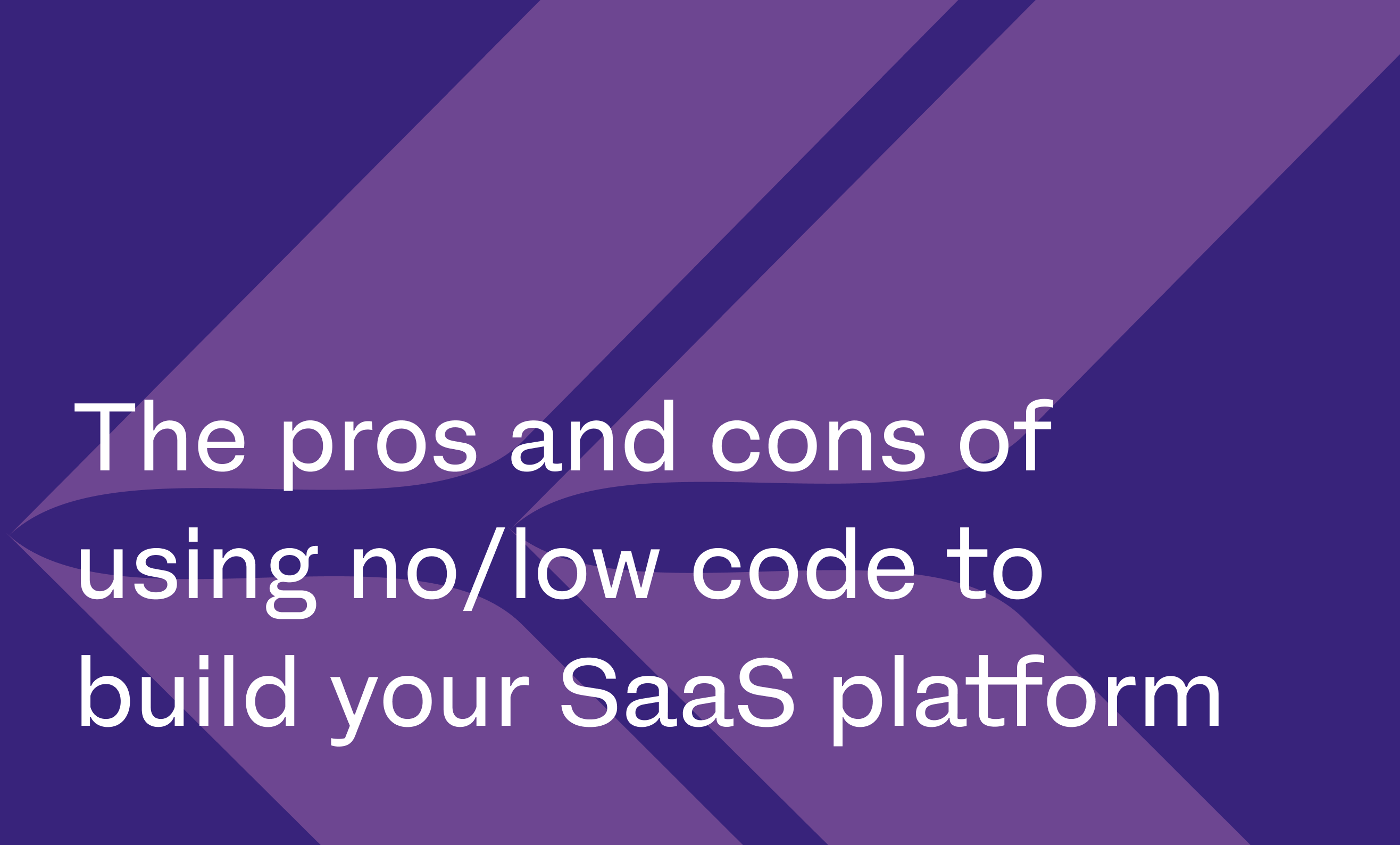6 February 2024
The pros and cons of no/low code to build your SaaS platform
At first glance, no or low-code tools promise several benefits to entrepreneurs who want to launch a product or start a SaaS business ASAP. The allure of rapid development, reduced costs and the ability to create sophisticated applications without the need for a team of skilled developers is tempting. However, before you jump on the no-code/low-code bandwagon, it's crucial to understand both the advantages and limitations of these tools. Your decisions and strategy now can determine whether you successfully establish a sustainable, scalable business or face challenges in overcoming the initial launch hurdle; which might require rebuilding your minimum viable product (MVP). Read on to discover the pros and cons of no/low code tools for your SaaS business.
Filters

The pros of no/low code tools
We’re a glass-half-full kind of digital product agency, so let’s start with the pros.
Quicker processes and potential cost savings
If your main objective is to get to market as quickly as possible, no-code and low-code tools can offer faster end-to-end processes and therefore cost savings. Brainstorms can come to life more quickly and prototypes produced faster than through traditional or full-code development cycles. Plus, the drag-and-drop interfaces are great for those with limited design skills or coding expertise so your MVP can be realised more rapidly. The simplicity of these tools can also make the update and ongoing maintenance processes more straightforward as there is simply less functionality and complexity to consider.
No need for developers
No-code and low-code tools have gained popularity for their ability to speed up the end-to-end creation and launch process. If you and/or your team have little or no coding experience it makes it easy to create functional applications with relatively intuitive visual interfaces. This approach has obvious benefits for startups with limited resources. When you don’t need to rely on developers (especially ones that might be based on the other side of the world) you could be looking at cost savings you can reassign to other parts of your business. No-code/low-code tools also tend to come with pre-built components and templates, further expediting the development process. This can work well with simpler applications or prototypes, helping you get your ideas off the ground swiftly.
The downsides of no/low code tools
Now, let’s look at the drawbacks of no/low code tools.
Vendor lock-in
When you build your application using a specific no-code/low-code platform, you become dependent on that platform's ecosystem, tools and infrastructure. Migrating from that platform often requires significant time and resources. As the needs of your business and users evolve, you might find your vendor hinders your ability to scale or implement advanced features. Just like the frustrations we have all experienced with changing an internet provider or car insurer, breaking free from the vendor lock-in can prove challenging, and might stall your company's ability to innovate and scale.
Technical limitations
No-code/low-code tools are designed to cater to a broad customer base, so they’re great for simple applications. However, if you want to appeal to the needs of a specific audience with customised or intricate software solutions, these tools are likely to fall short, particularly as your business grows and evolves. Customisation beyond the tool's built-in capabilities may demand a transition to traditional coding, negating some of the initial benefits no/low code tools offer. So, for long-term success it’s far better to build a Minimum Scalable Product (MSP) rather than merely a Minimum Viable Product.
The case for custom development in SaaS
The last thing you want when launching a SaaS business is to stall your potential. Opting for expert, customised development ensures that your SaaS platform is not confined by pre-existing templates or vendor constraints. This means you get a product that is tailored specifically to your business objectives and user needs. When it comes to achieving sustainable growth and developing a user-centric, futureproofed digital product portfolio you don’t necessarily need a CTO. However, you do need the right partner by your side. Collaborating with experts who understand your industry and customers - and who know digital product design and development inside out - ensures you create solutions that precisely meet the dynamic demands of your market. Call our team today to get your SaaS business off to the best start possible.



